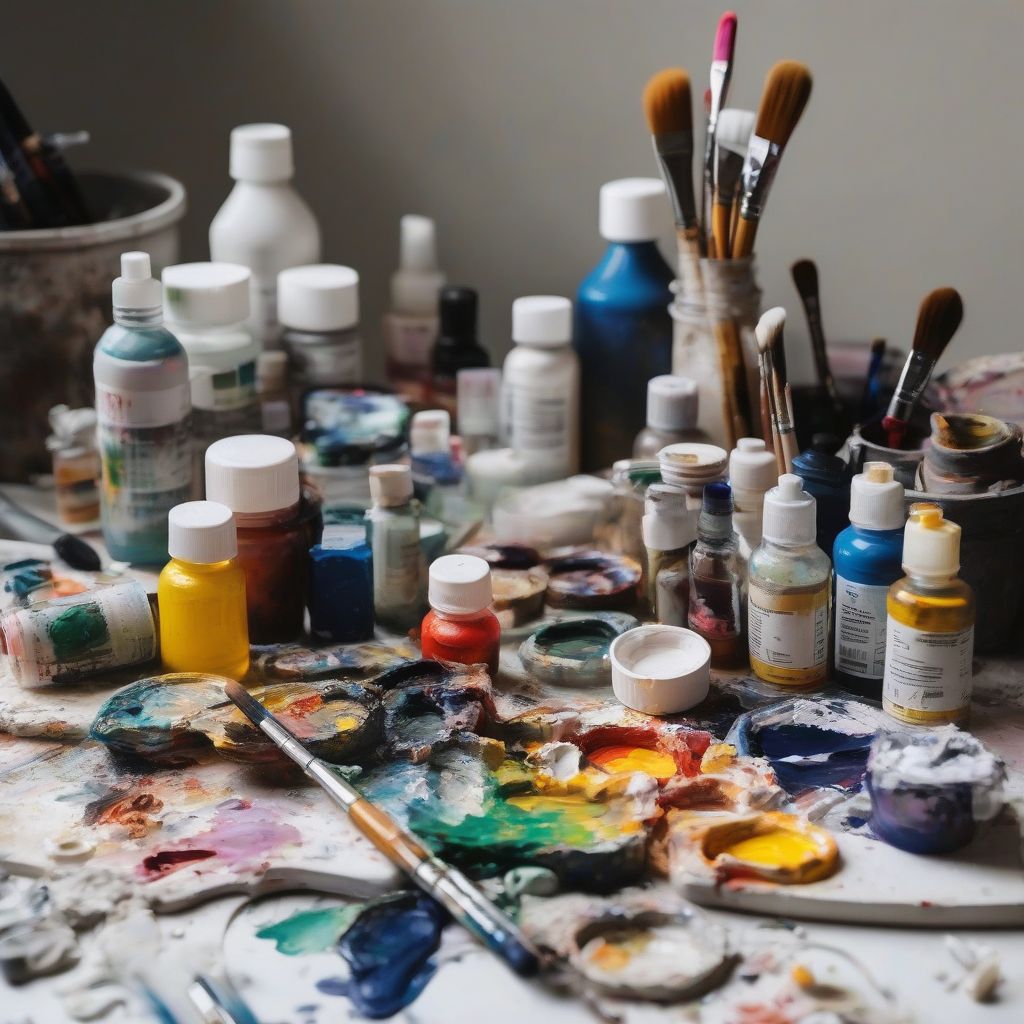Have you ever gazed upon a breathtaking oil painting and felt a surge of inspiration, a desire to create something just as captivating? Oil painting, with its rich history and vibrant colors, has a captivating allure. It might seem daunting at first, but mastering this art form is a journey filled with discovery and reward. This comprehensive guide will equip you with the essential tips and techniques to embark on your oil painting adventure.
Getting Started: Essential Supplies
Before you dive into the world of oil painting, you’ll need to gather a few essential supplies:
1. Oil Paints
Choosing your colors can be an exciting experience. Start with a basic palette of primary colors (red, yellow, blue), white, and black. As you gain experience, you can expand your palette with additional hues.
Tip: Invest in artist-grade oil paints whenever possible. While student-grade paints are more affordable, artist-grade paints offer richer pigments and better lightfastness, ensuring your artwork stands the test of time.
2. Brushes
Oil painting brushes come in various shapes and sizes, each serving a unique purpose. Some essential brush types include:
- Round Brushes: Versatile for lines, details, and filling in small areas.
- Flat Brushes: Ideal for covering large areas and creating broad strokes.
- Filbert Brushes: Offer a blend of round and flat shapes, perfect for blending.
- Fan Brushes: Used for blending, softening edges, and creating special effects.
3. Palette Knife
A palette knife is invaluable for mixing colors on your palette. It allows for precise color blending and creates unique textural effects when applied directly to the canvas.
4. Palette
Your palette is your color mixing station. You can use a traditional wooden palette, a glass palette for easy cleaning, or even disposable paper palettes.
5. Canvas or Painting Surface
Canvas is the most popular surface for oil painting, but you can also experiment with wood panels, linen, or even thick paper.
6. Mediums
Mediums are liquids added to oil paints to modify their consistency, drying time, and finish. Common mediums include:
- Linseed Oil: Increases flow and gloss.
- Turpentine: Thins paint and speeds up drying time (use with caution due to fumes).
- Mineral Spirits: A safer alternative to turpentine for thinning paint.
7. Easel
An easel provides a stable support for your canvas and allows you to work at a comfortable height.
8. Cleaning Supplies
Keep your brushes in top condition with odorless mineral spirits or a brush cleaner specifically designed for oil paints. Paper towels and rags are essential for wiping excess paint and cleaning your palette.
 Essential Oil Painting Supplies
Essential Oil Painting Supplies
[amazon bestseller=”oil painting supplies”]
Mastering the Basics: Fundamental Techniques
1. Preparing Your Canvas
Before you begin painting, it’s crucial to prime your canvas. Priming creates a smooth surface that prevents the oil paint from being absorbed into the canvas, ensuring vibrant and long-lasting colors.
2. Understanding Color Theory
Color theory is the foundation of successful painting. Familiarize yourself with the color wheel, primary, secondary, and tertiary colors, and concepts like hue, saturation, and value. Understanding color relationships will empower you to create harmonious and visually appealing compositions.
3. Mixing Colors
One of the joys of oil painting is the ability to mix an infinite range of colors. Start by squeezing small amounts of your chosen colors onto your palette. Use your palette knife to combine them gradually, experimenting with different ratios to achieve the desired hues.
Tip: When mixing colors, always add the darker color to the lighter color to maintain control over the value.
4. Brushwork Techniques
Brushwork is the heart and soul of oil painting. It allows you to express your creativity through a variety of strokes and textures. Some fundamental brushwork techniques include:
- Layering: Apply thin layers of paint, allowing each layer to dry before adding the next. This technique creates depth and luminosity.
- Blending: Soften the transitions between colors by gently merging them with your brush.
- Glazing: Apply thin, transparent layers of color to modify the underlying layers, creating rich and subtle effects.
- Scumbling: Drag a dry brush with a small amount of paint over a dry layer, creating a broken color effect that adds texture.
- Impasto: Apply thick layers of paint, often straight from the tube, to create texture and dimension.
5. Creating Depth and Perspective
To create a sense of depth and perspective in your paintings, consider:
- Linear Perspective: Use converging lines to draw the viewer’s eye toward a vanishing point on the horizon.
- Atmospheric Perspective: Create the illusion of distance by using cooler colors and softer details for objects further away.
- Overlapping: Position objects in a way that overlaps, suggesting depth and spatial relationships.
Tips for Success
- Start Simple: Begin with simple subjects and gradually challenge yourself with more complex compositions as your skills develop.
- Practice Regularly: Consistent practice is key to improvement. Set aside dedicated time for painting, even if it’s just for a few minutes each day.
- Experiment: Don’t be afraid to experiment with different techniques, colors, and mediums. Embrace the learning process and discover your unique style.
- Seek Inspiration: Visit art museums, study the works of master painters, and find inspiration from nature, photography, and everyday life.
- Don’t Be Afraid to Make Mistakes: Every artist makes mistakes. View them as learning opportunities and embrace the imperfections that make your artwork unique.
Conclusion
Oil painting is a rewarding and multifaceted art form that invites exploration and discovery. By understanding the fundamental techniques, gathering the right supplies, and embracing a spirit of creativity, you can embark on a fulfilling journey of artistic expression. Remember, patience, practice, and a passion for learning are your greatest allies.
Now that you’re armed with this knowledge, pick up your brushes, unleash your creativity, and embark on your oil painting adventure. Share your masterpieces with the world and inspire others to discover the joy of this timeless art form. And who knows, you might just uncover a hidden talent that brings beauty and inspiration into your life.
